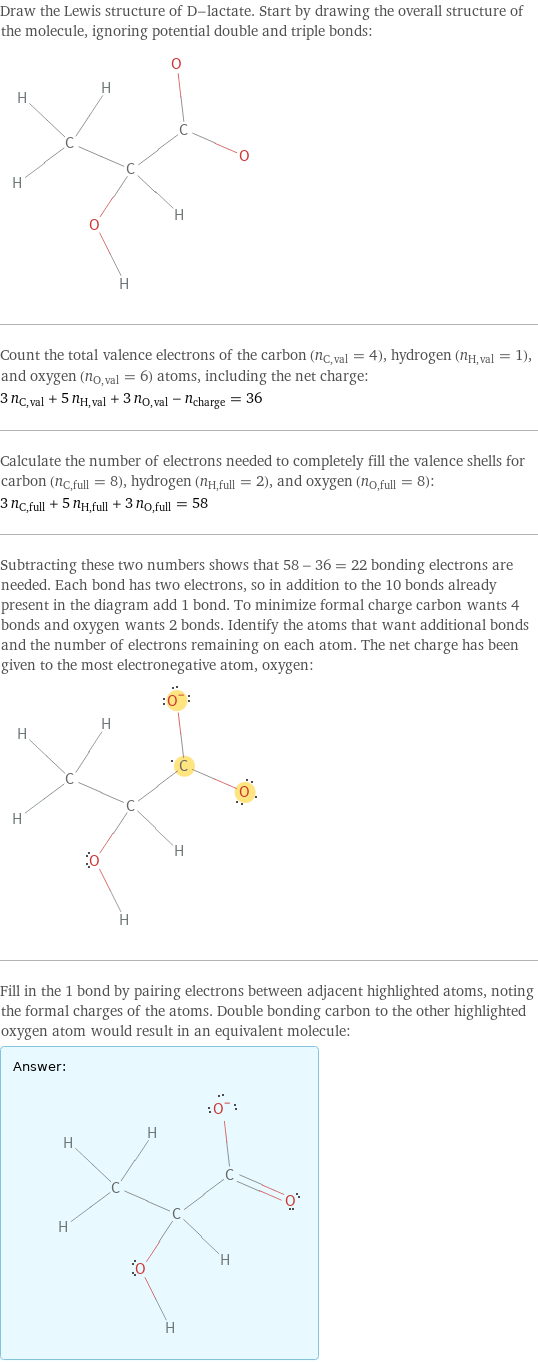Input interpretation

D-lactate
Chemical names and formulas

formula | C_3H_6O_3 name | D-lactate alternate names | (R)-2-hydroxypropanate | (R)-lactate | lactate mass fractions | C (carbon) 40.5% | H (hydrogen) 5.66% | O (oxygen) 53.9%
Lewis structure

Draw the Lewis structure of D-lactate. Start by drawing the overall structure of the molecule, ignoring potential double and triple bonds: Count the total valence electrons of the carbon (n_C, val = 4), hydrogen (n_H, val = 1), and oxygen (n_O, val = 6) atoms, including the net charge: 3 n_C, val + 5 n_H, val + 3 n_O, val - n_charge = 36 Calculate the number of electrons needed to completely fill the valence shells for carbon (n_C, full = 8), hydrogen (n_H, full = 2), and oxygen (n_O, full = 8): 3 n_C, full + 5 n_H, full + 3 n_O, full = 58 Subtracting these two numbers shows that 58 - 36 = 22 bonding electrons are needed. Each bond has two electrons, so in addition to the 10 bonds already present in the diagram add 1 bond. To minimize formal charge carbon wants 4 bonds and oxygen wants 2 bonds. Identify the atoms that want additional bonds and the number of electrons remaining on each atom. The net charge has been given to the most electronegative atom, oxygen: Fill in the 1 bond by pairing electrons between adjacent highlighted atoms, noting the formal charges of the atoms. Double bonding carbon to the other highlighted oxygen atom would result in an equivalent molecule: Answer: | |
Basic properties

molar mass | 89.07 g/mol
Units

Chemical identifiers
[O-])O](../image_source/7fc873efd52dce47f09e898f55d534ce.png)
CAS number | 10326-41-7 SMILES identifier | C[C@H](C(=O)[O-])O